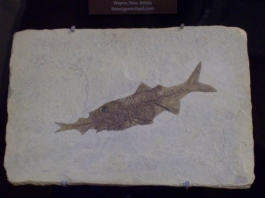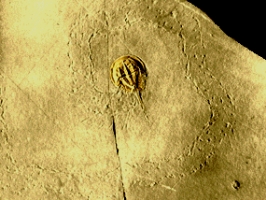|
Home
>
Consider the evidence
>
Fossils
|
 Previous
Next
Previous
Next 
|
|
|
|
|
|
If the remains of something have completely fossilised, then the fossil doesn't contain any of
the original living thing. These fossils are simply made of minerals, that have replaced the
remains and kept the same shape, there is nothing of the original organism left. Therefore,
these fossils can't be dated directly, as there is no carbon left from the remains, so carbon
dating is not possible. Also, they are normally found in sedimentary rock which does not
contain material suitable for radiometric dating.
Sometimes the remains don't completely fossilise. In these cases the remains can be
carbon dated, although carbon dating
is flawed. Sometimes the soft tissue remains of
dinosaurs have been discovered, but they couldn't have survived millions of years without
decomposing. Have a look at the following article: Scientists recover T. Rex soft tissue
.
There is extensive evidence to indicate that fossils are formed rapidly, such as during a flood,
rather than over long periods of time, as evolutionists believe. There are many examples of
aquatic fossils mixed up with land animals all over the world, from Britain and France, to the
USA, to Australia (see "Further reading" below). The image on the right is a fossil of a fish
eating another fish - buried so rapidly it couldn't finish its dinner!
|
|
|
There are many other examples within the
fossil record that do not fit with the evolution /
Geologic Column model, such as layers of rock below layers that are supposed to be older.
In addition, there are rocks that are supposed to be millions of years old, formed gradually
from mud, with animal tracks on them. The picture opposite shows horseshoe crab tracks
preserved in stone. Surely the tracks would have been erased by erosion over millions of
years? |
|
|
|

 Previous
Next
Previous
Next 


